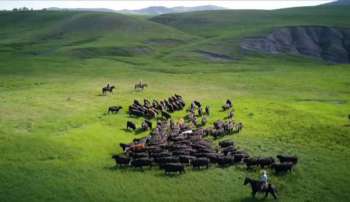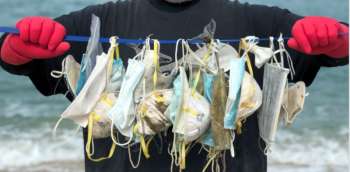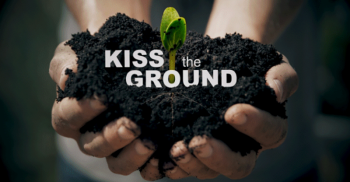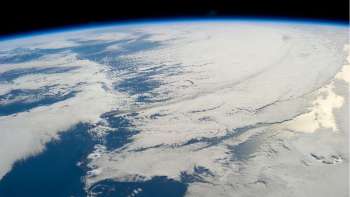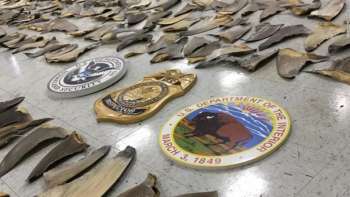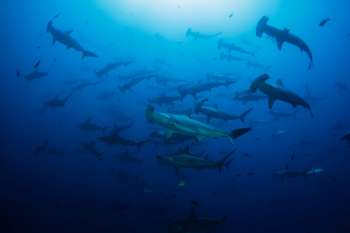Nature News

The Most Powerful Plant on Earth
ExpiredAn informative documentary on the importance of Hemp as a solution to several problems and an economically valuable commodity.
More News
A Real Cure for Climate Change
ExpiredTop Stories
Canada is home to one of the most endangered ecosystems in the entire world - the temperate grasslands of the Great Plains.
Our native prairie is home to over 60 species at-risk but it is disappearing and at an alarming rate. However, cattle are maintaining and preserving these iconic landscapes and providing hope for the plants and animals that call them home. Sometimes what you thought was the problem, is really the solution.
In a time where companies are marketing meat substitues such as Beyond Meat and Impossible Foods, it is important to note there are ecological reasons to maintain a healthy cattle grazing industry in Canada and in large segments of the US midwest.
Scotland, site of the recent United Nations 26th Conference of the Parties (COP26) climate summit, has cut down 14 million trees to make room for new wind power installations.
During the Meeting of the Governing Council on Tuesday, April 27, the Vice President of the Republic Epsy Campbell announced that the Footprint of the Future program is taking its first successful steps.
The marine research group Oceans Asia has released a report titled, Masks on the Beach: The Impact of COVID-19 on Marine Plastic Pollution. The article outlines important issues regarding the global impact of PPE face masks as a source of pollution globally.
Single-use face masks are made from a variety of meltblown plastics and are difficult to recycle due to both composition and risk of contamination and infection. These masks enter our oceans when they are littered or otherwise improperly discarded, when waste management systems are inadequate or non-existent, or when these systems become overwhelmed due to increased volumes of waste.
“Using an annual global production estimate of 52 billion masks, we calculate that1.56 billion maskswill enter our oceans in 2020, amounting to between 4,680 and 6,240 tonnes of plastic pollution.”
Around the world, as a result of the COVID-19 pandemic, the production and use of personal protective equipment (PPE), such asmasks and gloves,has skyrocketed. The value of the global face masks market was~$0.79 billion USD in 2019, but expanded to an estimated~$166 billion USD by the end of 2020.
One report in June predicted that the volume of this market will peak at more than 52 billion units by the end of 2020.This rapid increase in production still falls short of demand –in June the World Health Organization (WHO) and others estimated that 129 billion face masks and 65 billion gloves would be needed on a monthly basis in order to protect people worldwide.
Regardless of whether the face mask offers adequate protection from a virus which is smaller than the majorty of masks are capable of filtering, PPE face masks are currently in use around the world as a means of personal protection from Sars Covid-19 and other pathogens. One issue that is rarely discussed is what happens to these disposable masks once they are discarded.
If they truely function as intended then they should be disposed of as a harzardous waste product, since they could contain virus particles, bacteria, molds or fungus.
If disposed of properly they still end up in landfills, and add to the accumulation of plastics in the environment.
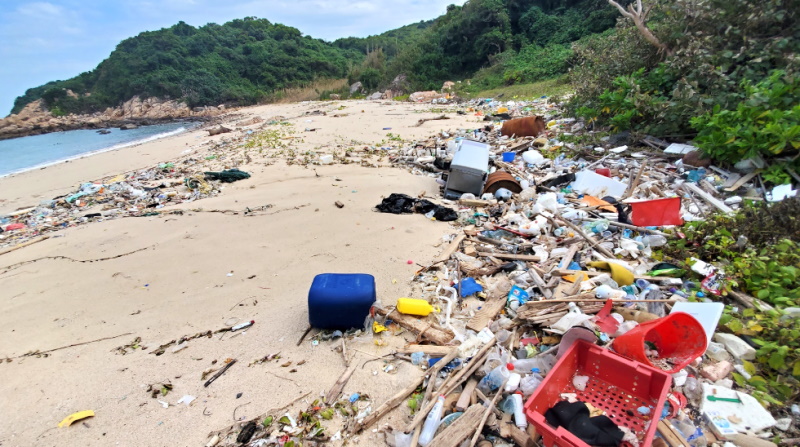
The improper disposal of single-use plastic PPE has led to a surge in plastic pollution, most notably in our oceans and waterways. This increase was brought to world attention when we first reported finding face masks washing up on remote beaches in the Soko Islands, Hong Kong in late February 2020. Since then, with each visit, we have continued to find masks on beaches around Hong Kong.
Unfortunately, this problem is not limited to Hong Kong; divers with Opération Mer Propre found masks on the sea bed during a clean up near the Côte d'Azur, France.
Photographer, Dan Giannopoulos photographed over 300 discarded gloves and masks found around Southampton, United Kingdom (UK) over the course of 4 days.
The news is full of stories of PPE littering cities around the globe.
The proliferation of masks in the environment reveals weaknesses in our waste management systems and irresponsible practices/habits on the part of individuals.
It also serves to illuminate an issue that has been accumulating for decades–unchecked plastic pollution contaminating our environment. The accumulation of plastic in the environment is not a recent phenomenon, but it is one that is becoming increasingly problematic and unavoidable – encountering plastic debris on a visit to the beach is almost inescapable.
Here on Playa Potrero, Canadian visitors helping with a beach cleanup in December, were shocked to find dozens of discarded plastic hypodermic needles washed up on the beach. Other plastics containers and discarded items are a constant source of concern. It's inevitable that discarded masks will soon become a new source of waste washing up on our shores.
The research indicates additional plastic pollution created by the COVID-19 pandemic is but part of a much larger problem. While this problem is not new, the urgency of the call to action grows louder as the plastic piles up.
You can view or download the research document here.
To support the work of Oceans Asia or get involved by sponsoring a project visit here
A Real Cure for Climate Change
ExpiredMost of us are aware of the Climate Change debate and the costly solutions being proposed in the government and media. What if there was a way to reduce global carbon emisssions that has proven results?
The top climate change scientist for the National Oceanic and Atmospheric Administration (NOAA) said he has received $4 million from Congress and permission from his agency to study two emergency—and controversial—methods to cool the Earth if the U.S. and other nations fail to reduce global greenhouse gas emissions.
A long-standing mystery among marine biologists is why otherwise healthy whales, dolphins, and porpoises — collectively known as cetaceans — end up getting stranded along coastal areas worldwide. Could severe solar storms, which affect Earth’s magnetic fields, be confusing their internal compasses and causing them to lose their way?
In a news release, the U.S. Fish and Wildlife Service said the shark fins were hidden in 18 boxes. It is believed the dried fins arrived from South America and were likely headed to Asia, the AP reported.
Shark fin soup is awell known Asian delicacy, especially in China. To meet the demand, smugglers kill tens of millions of sharks every year, cutting the fin from a live shark, according to conservation groups, as the AP reported.
The practice of shark finning is banned in several countries because it is extremely wasteful and cruel. After the fin is cut off from the live shark, the rest of the shark is discarded. The practice has been a federal crime in the U.S. since 2000, according to the Miami Herald.
"The goal of this seizure is to protect these species while deterring trackers from using US ports as viable routes in the illegal shark fin trade," Christina Meister, a spokeswoman for the U.S. Fish and Wildlife Service, said as the Miami Herald reported.
An international agreement between governments around the world is aimed to protect vulnerable animals and plants. The Convention on International Trade in Endangered Species (CITES) protects only12 species of sharks, which are included in Appendix II of CITES, according to CNN.
According to the U.S. Fish and Wildlife Service:
"The shipment violated the Lacey Act and included CITES listed species," Gavin Shire, U.S. Fish and Wildlife Service Chief of Public Affairs, told CNN. "We are limited to what we can say about this as it is an ongoing case."
While it is illegal in the U.S. to cut off a fin from a live shark and discard the rest of the animal, it is not illegal to traffic or trade shark fins in the U.S. Another issue is that shark fin imports may not be indicated on the import forms. Shark fins are often classified simply as dried seafood or frozen seafood, or as shark fins from one of the species not on the list of banned items.
"The recent seizure of more than 1,000 pounds of shark fins in Miami from potentially protected species demonstrates why we need a federal shark fin ban," said Ariana Spawn, an ocean advocate at the nonprofit advocacy group Oceana, as CNN reported. She urged the Senate to pass the Shark Fin Sales Elimination Act (S.877), which would ban the trade of fins nationwide.
According to CREMA, the Rescue Center for Endangered Marine Species, since President Alvarado of Costa Rica took office in May 8, 2018, shark fin exporters have continued to purchase hammerhead shark fins from domestic fishers and stockpile them in Puntarenas with hopes of exporting the fins in the future.
So while many people around the world assume a country like Costa Rica supports a ban on such an inhumane practice as shark-fining, the truth is it is allowed to continue. What is not allowed is the export of Hammerhead shark fins.
Hammerhead shark fin exports were banned on March 1, 2015 by the National System of Conservation Areas (SINAC) of the Ministry of Environment (MINAE). This ban remains in effect until the CITES Scientific Council (an 8 to 16 member body established by the Wildlife Conservation Law and under the jurisdiction of the Ministry of Environment) approves the resumption of exports at some future date, under criteria of biological sustainability. Fortunately the Scientific Council has since issued two biological opinions (August 2015 and again in February 2017) recommending that the export ban stay in effect, as the survival of the species is dependent on increasing the numbers of this species, not reducing them.
The current size of the stockpile in Puntarenas is unknown. From May 1 to December 31 of 2015, it is known with certainty that exporters managed to amass over 10 tons of hammerhead fins (15,000 hammerhead sharks are needed to amass a 10 ton stockpile).
According to CREMA, on August 2017, frustrated with the advice of the scientists disallowing hammerhead shark fin exports and urged by the shark fin industry, the former government of Luis Guillermo Solis stripped the MINAE of its jurisdiction over sharks, by listing them under INCOPESCA´s Commercial Species List (AJDIP 290-2017). As a result, the conservation and management of sharks was effectively made the sole responsibility of INCOPESCA, beyond the reach of the Wildlife Conservation Law and the jurisdiction of MINAE. According to agreements reached by the fishing sector and the Executive in August 29, 2018, last September 22 was assigned as the deadline for INCOPESCA to issue their own biological opinion regarding the convenience or not of resuming hammerhead shark fin exports.
“Sadly, hammerhead shark conservation has taken numerous steps backwards since Costa Rica boldly led the process to list them under Appendix II of CITES just 5 years ago,” regretted Isabel Naranjo of the Costa Rican Endangered Marine Species Rescue Center CREMA. “As of yet, no official actions have been taken to improve the conservation status of this Endangered Species,” said Naranjo.
President Carlos Alvarado inherited this issue from the previous administration, and now he must decide. Will his government allow the export of hammerhead shark fins obtained during an export ban?
Fortunately, President Alvarado has a valuable tool to change the situation for hammerhead sharks once and for all in Costa Rica. Last May 18, just two weeks into his Presidency, the Contentious Administrative and Civil Appeals Court (Carpeta N° 17-8322-1027-CA) ordered the removal of hammerhead sharks from INCOPESCA’ Commercial Species List.
“This ruling paves the way to return shark management and conservation responsibility to the Ministry of Environment where the Wildlife Conservation Law must be implemented to its full extent to save endangered hammerhead sharks,” said an optimistic Randall Arauz, representative in Costa Rica of the Colorado based Fins Attached Marine Research and Conservation. “Conserving the population of hammerhead sharks in Costa Rica will take nothing short of this action,” he warned.
While this is good news for those who support the ban on shark fining exports, it is not discouraging those that stockpile fins in the hopes of exporting them in the future.
CREMA calls on the general public to keep supporting their petition to President Alvarado for Costa Rica to NOT export that hammerhead shark fin stockpile, and for the protection and management of sharks to occur under the tutelage of MINAE and the implementation of the Wildlife Conservation Law to its full extent.
Click here to sign the petition
On May 4th an executive order was published modifying the procedures used to authorize shark fin exports from endangered and threatened species.
Humpback Whales in Costa Rica
ExpiredHumpback Whales are regular visitors to our part of the world.
Humpback whales are well known for their long "pectoral" fins, which can be up to 15 feet (4.6 m) in length. Their scientific name, Megaptera novaeangliae, means "big-winged New Englander" as the New England population was the one best known to Europeans. These long fins give them increased maneuverability; they can be used to slow down or even go backwards.
Similar to all baleen whales, adult females are larger than adult males, reaching lengths of up to 60 feet (18 m). Their body coloration is primarily dark grey, but individuals have a variable amount of white on their pectoral fins and belly. This variation is so distinctive that the pigmentation pattern on the undersides of their "flukes" is used to identify individual whales, similar to a human fingerprint.
In the summer, humpbacks are found in high latitude feeding grounds, such as the Gulf of Maine in the Atlantic and Gulf of Alaska in the Pacific. In the winter, they migrate to calving grounds in subtropical or tropical waters, such as the Dominican Republic in the Atlantic and the Hawaiian Islands in the Pacific. The Arabian Sea humpback does not migrate, remaining in tropical waters all year.
Humpback whales travel great distances during their seasonal migration, the farthest migration of any mammal. The longest recorded migration was 11,706 miles (18,840 km), with a trek from American Samoa to the Antarctic Peninsula. One of the more closely studied routes is between Alaska and Hawaii, where humpbacks have been observed making the 3,000 mile (4,830 km) trip in as few as 36 days.
During the summer months, humpbacks spend the majority of their time feeding and building up fat stores (blubber) that they will live off of during the winter. Humpbacks filter feed on tiny crustaceans (mostly krill), plankton, and small fish and can consume up to 3,000 pounds (1,360 kg) of food per day. Several hunting methods involve using air bubbles to herd, corral, or disorient fish. One highly complex variant, called "bubble netting," ![]() is unique to humpbacks. This technique is often performed in groups with defined roles for distracting, scaring, and herding before whales lunge at prey corralled near the surface.
is unique to humpbacks. This technique is often performed in groups with defined roles for distracting, scaring, and herding before whales lunge at prey corralled near the surface.
In their wintering grounds, humpback whales congregate and engage in mating activities. Humpbacks are generally "polygynous" with males exhibiting competitive behavior on wintering grounds. Aggressive and antagonistic behaviors include chasing, vocal and bubble displays, horizontal tail thrashing, and rear body thrashing. Males within these groups also make physical contact, striking or surfacing on top of one another. These bouts can cause injuries ranging from bloody scrapes to, in one recorded instance, death. Also on wintering grounds, males sing complex songs that can last up to 20 minutes and be heard 20 miles (30 km) away. A male may sing for hours, repeating the song several times. All males in a population sing the same song, but that song continually evolves over time. Humpback whale singing has been studied for decades, but scientists still understand very little about its function.
Gestation lasts for about 11 months. Newborns are 13-16 feet (4-5 m) long and grow quickly from the highly nutritious milk of their mothers. Weaning occurs between 6-10 months after birth. Mothers are protective and affectionate towards their calves, swimming close and frequently touching them with their flippers. Males do not provide parental support for calves. Breeding usually occurs once every two years, but sometimes occurs twice in a three year span.
Habitat
During migration, humpbacks stay near the surface of the ocean.
While feeding and calving, humpbacks prefer shallow waters. During calving, humpbacks are usually found in the warmest waters available at that latitude. Calving grounds are commonly near offshore reef systems, islands, or continental shores.
Humpback feeding grounds are in cold, productive coastal waters.
Humpback whales live in all major oceans from the equator to sub-polar latitudes.
In the North Pacific, there are at least three separate populations, and
- California/Oregon/Washington stock that winters in coastal Central America and Mexico and migrates to areas ranging from the coast of California to southern British Columbia in summer/fall;
- Central North Pacific stock that winters in the Hawaiian Islands and migrates to northern British Columbia/ Southeast Alaska and Prince William Sound west to Kodiak; and
- Western North Pacific stock that winters near Japan and probably migrates to waters west of the Kodiak Archipelago (the Bering Sea and Aleutian Islands ) in summer/fall. There is some mixing between these populations, though they are still considered distinct stocks.
In the Southern Hemisphere, the International Whaling Commission (IWC) ![]() has designated seven major breeding stocks linked to seven major feeding areas. In Costa Rica, there is overlap with Northern Hemisphere humpbacks geographically, but they are not there at the same time. All Southern Hemisphere humpbacks share feeding grounds in the Antarctic south of 40°S and between 120°E and 110°W.
has designated seven major breeding stocks linked to seven major feeding areas. In Costa Rica, there is overlap with Northern Hemisphere humpbacks geographically, but they are not there at the same time. All Southern Hemisphere humpbacks share feeding grounds in the Antarctic south of 40°S and between 120°E and 110°W.
Based on the most recent status review of the humpback whale, the NOAA determined that the species consists of 14 DPSs. View a map showing the identification and distribution of these DPSs here.
Humpback whales face a series of threats including:
- entanglement in fishing gear (bycatch)
- ship strikes
- whale watch harassment
- habitat impacts
- harvest
Humpbacks can become entangled in fishing gear, either swimming off with the gear or becoming anchored. We have observed incidental "take" of humpback whales in the California/ Oregon swordfish and thresher shark drift gillnet fishery. Potential entanglement from gear from several fisheries can occur on their long migration from Hawaii to Alaska. Humpbacks in Hawaii have been observed entangled in longline gear, crab pots, and other non-fishery-related lines.
Inadvertent ship strikes can injure or kill humpbacks. We have verified mortality related to ship strikes in the Gulf of Maine and in southeastern Alaska. Ship strikes have also been reported in Hawaii.
Whale watching vessels may stress or even strike whales. The Gulf of Maine stock is the focus of whale watching in New England from late spring to early fall, particularly within the Stellwagen Bank National Marine Sanctuary. The central North Pacific stock is the focus of a whale-watching industry on their wintering grounds in the Hawaiian Islands. The feeding aggregation in southeast Alaska is also the focus of a developing whale-watching industry that may impact whales in localized areas.
Shipping channels, fisheries, and aquaculture may occupy or destroy humpback whale aggregation areas. Recreational use of marine areas, including resort development and increased boat traffic, may displace whales that would normally use that area. In Hawaii, acoustic impacts from vessel operation, oceanographic research using active sonar, and military operations are also of increasing concern.
Japan has issued scientific permits in the Antarctic and in the western North Pacific in recent years. In 2009, the full JARPA II program commenced. Annual sample sizes for the full-scale research (lethal sampling) are set at 50 humpback whales. According the the IWC, Japan has refrained from taking humpback whales.
Efforts to conserve humpback whales include:
- Reduce bycatch in gillnet and trap/pot fisheries in the western North Atlantic through the Atlantic Large Whale Take Reduction Plan.
- Implement marine mammal take reduction measures identified in the Pacific Offshore Cetacean Take Reduction Plan.
- Mitigate ship strikes and respond to humpback whales in distress (see Alaska and Hawaii regulations).
- Educate whale watch vessels and boat operators on practicing safe boating around whales, such as through the Whale SENSE and See A Spout programs.
- Monitor humpbacks in U.S. waters via shipboard surveys and mark recapture studies.
- Research humpback population structure and abundance, though studies like the Structure of Populations, Levels of Abundance, and Status of Humpbacks (SPLASH) and More North Atlantic Humpbacks (MoNAH) projects, as well as work done at the Hawaiian Islands Humpback Whale National Marine Sanctuary.
- Recover the species [pdf]
In 1946, the International Convention for the Regulation of Whaling regulated commercial whaling of humpback whales.
In 1966, the International Whaling Commission prohibited commercial whaling of humpbacks.
In June 1970, humpback whales were designated as "endangered" under the Endangered Species Conservation Act (ESCA). In 1973, the Endangered Species Act (ESA) replaced the ESCA, and continued to list humpback whales as endangered.
In April 2015, we proposed to revise the ESA listing of the humpback whale by identifying 14 DPSs and listing 2 DPSs as threatened and 2 as endangered (80 FR 22304). The other 10 identified DPSs were not proposed for listing.
In September 2016, we revised the ESA listing for the humpback whale to identify 14 Distinct Population Segments (DPS), list 1 as threatened, 4 as endangered, and identify 9 others as not warranted for listing. We also issued two final rules governing approach of humpback whales in Alaska and Hawaii. The first re-codifies existing approach regulations in Alaskan waters under the ESA so they apply to both threatened and endangered humpback whales, and adds similar approach regulations under the MMPA to protect all humpback whales found off Alaska. The other is an interim final rule for approach regulations under the MMPA in Hawaiian waters to replace the previous regulations under the ESA. While the regulations are effective 30 days after their publication in the Federal Register, NOAA Fisheries is accepting public comment for 60 days after their publication and will publish a final rule in the future.
Under the MMPA, threats to humpback whales are mitigated by regulations implementing the Pacific Offshore Cetacean Take Reduction Plan and the Atlantic Large Whale Take Reduction Plan.
Kingdom: Animalia
Phylum: Chordata
Class: Mammalia
Order: Cetacea
Family: Balaenopteridae
Genus: Megaptera
Species: novaeangliae
Species Description
Weight: | 25-40 tons (50,000-80,000 pounds; 22,000-36,000 kg); newborns weigh about 1 ton (2,000 pounds; 900 kg) |
Length: | up to 60 feet (18 m), with females larger than males; newborns are about 15 feet (4.5 m) long |
Appearance: | primarily dark grey, with some areas of white |
Lifespan: | about 50 years |
Diet: | tiny crustaceans (mostly krill), plankton, and small fish; they can consume up to 3,000 pounds (1360 kg) of food per day |
Behavior: | breaching (jumping out of the water), or slapping the surface |
(Sea Shepherd) – The Costa Rican Government is forcing Sea Shepherd to shut down Operation Jairo II, a campaign to protect endangered sea turtles.
Any Sea Shepherd volunteer found patrolling beaches or engaging in sea turtle conservation work will be detained and deported.

The Most Powerful Plant on Earth
ExpiredAn informative documentary on the importance of Hemp as a solution to several problems and an economically valuable commodity.
